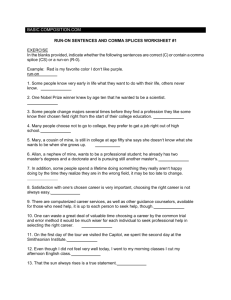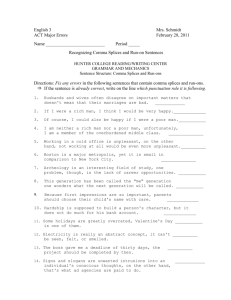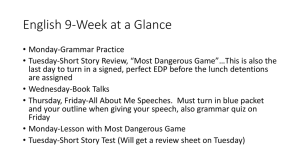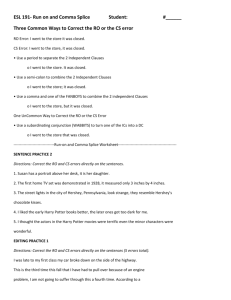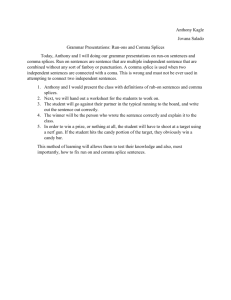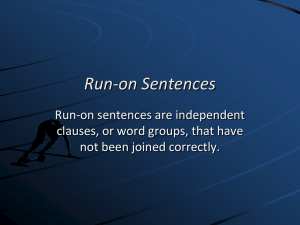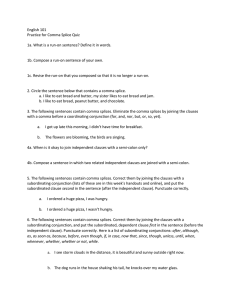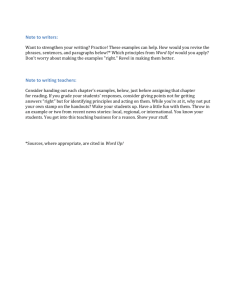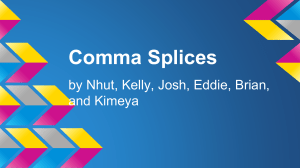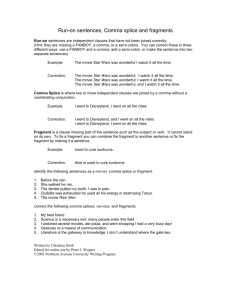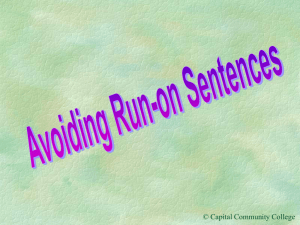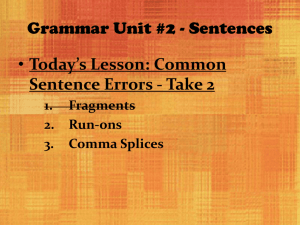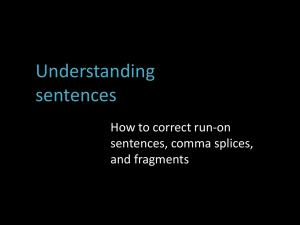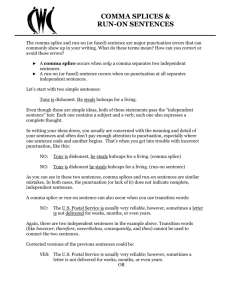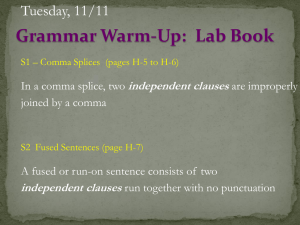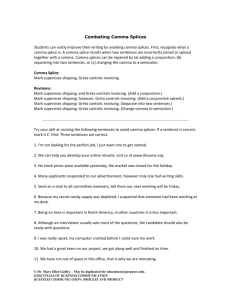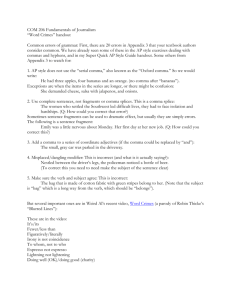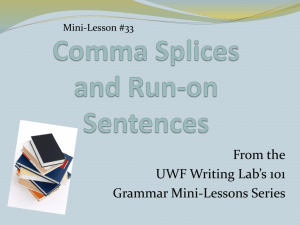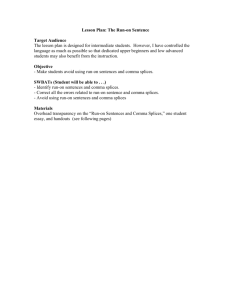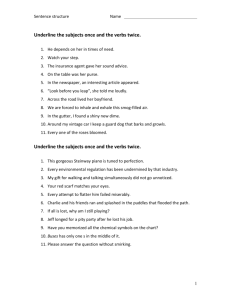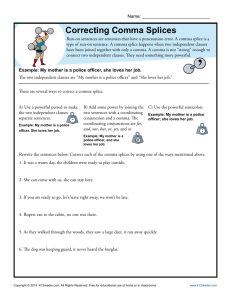Sentence Boundaries (fragments, run
advertisement
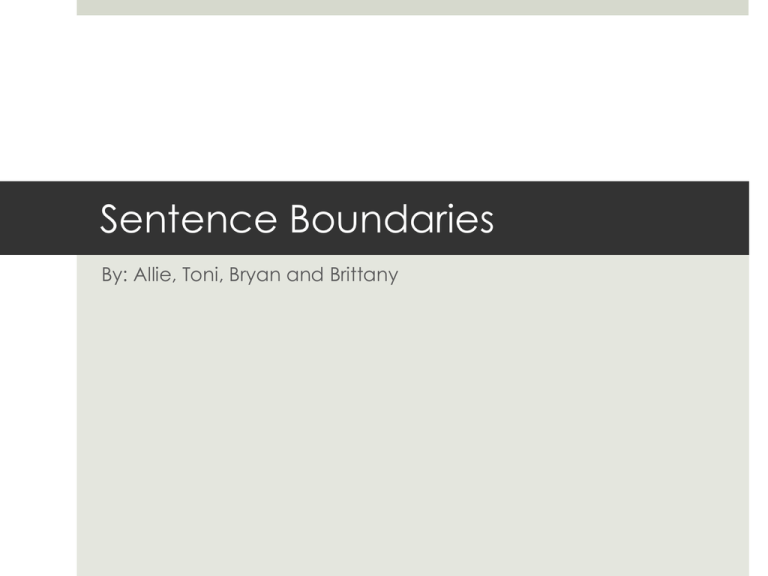
Sentence Boundaries By: Allie, Toni, Bryan and Brittany Sentence Boundaries Includes: Fragments, run-on sentences and comma splices. They are incomplete sentences that are commonly used in conversation but are not appropriate for academic writing. They make the meaning of your sentence confusing and distracting to readers. To correct sentence boundaries To correct fragments you can combine them with near by clauses or add words t make them a complete sentence. Wrong: NBC will broadcast the debates. With discussions afterwards. Correct: NBC will broadcast the debates, with discussions afterwards. The problem was with the period breaking the sentence up when it should be one whole sentence. More examples Wrong: Jane didn’t return to work for three weeks after her surgery. To let her knee fully heal. Correct: Jane didn't return to work for three weeks. She wanted to let her knee fully heal. Wrong: William Shakespeare wrote many plays. Such as Hamlet and Macbeth. Correct: William Shakespeare wrote many plays, such as Hamlet and Macbeth. Run-on Sentences A run-on sentence is a sentence that results form joining two or more independent clauses without using correct punctuation. The best way to fix a run-on sentence is too separate them into two sentences. Example: My mother likes to work in the garden she grows beautiful sunflowers. Correct: My mother likes to work in the garden. She grows beautiful sunflowers. Comma Splices A comma splice occurs when independent clauses are separated only by a comma. Essentially a run-on sentence that is separated into by a comma when it should be two complete sentences. Example: John hikes a different section of the Appalachian Trail every year, it’s his favorite way to spend summer break. Correct: John hikes a different section of the Appalachian Trail every year. It’s his favorite way to spend summer break. Comma Splices If the ideas in the two clauses are closely related, you can join them with a comma and a coordinating conjunction or semicolon. Example: I woke up with a headache, I took some aspirin. Correct: I woke up with a headache, so I took some aspirin. Comma Splices It is important to remember to add a coordinating conjunction or you are just using a comma splice again. Example: I need to pay my tuition I don’t have enough money. Correct: I need to pay my tuition, but I don’t have enough money. Work Cited Lunsford, Andrea A., ed. The St. Martin’s Handbook: Seventh Edition. Boston, New York: Bedford/ St. Martin’s, 2011. Print.http://writingcenter.unc.edu/handouts/sentence-patterns/ © 2010-2012 by The Writing Center at UNC Chapel Hill.
